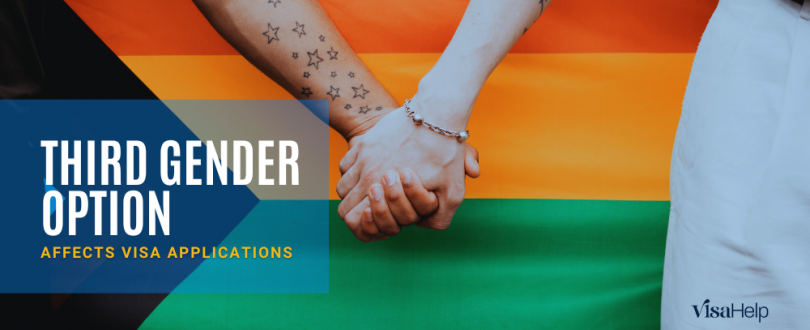
In a world increasingly aware of gender diversity, the United States Citizenship and Immigration Services (USCIS) has introduced a third gender option on its naturalization forms. This reflects a broader movement towards recognizing non-binary, intersex, and transgender identities in official documents. Understanding the implications of this change is crucial for travelers and those involved in U.S. immigration processes.
Background and Significance
The addition of a third gender option on USCIS forms is a significant step in acknowledging gender diversity. Traditionally, legal documents like passports and driver’s licenses offered only ‘Male’ (M) and ‘Female’ (F) options. This limited structure often didn’t accurately represent the identity of non-binary, intersex, and transgender individuals. Globally, there’s been a growing recognition of gender as a spectrum, with countries like Canada, Australia, and India including non-binary markers in their official documents.

The Third Gender Option: A Closer Look
The ‘X’ gender marker provides a vital alternative for those who do not identify as strictly male or female. Its inclusion helps dismantle the traditional binary view of gender in legal documentation and fosters an inclusive environment that acknowledges diverse gender identities. This change is about respecting individual identity and simplifying legal and administrative processes, reducing the risk of harassment and discrimination.
Impact on the Immigration Process
This update streamlines the application process for transgender, non-binary, and intersex individuals. It also addresses mental and emotional well-being by reducing stress and anxiety related to potential discrimination. Furthermore, aligning with global standards, this change could ease international travel and immigration for individuals with a non-binary gender marker.
Global Context
The U.S. joins other nations in recognizing gender diversity with this move. Countries like Canada, Australia, Germany, and India have implemented similar gender designations, reflecting a global shift towards accepting gender as a spectrum. This change aligns with United Nations guidelines on human rights, emphasizing the recognition of diverse gender identities and expressions.
Challenges and Criticisms
Integrating a third-gender option presents several challenges, including the need to adapt existing legal and administrative structures to accommodate this new category. Questions arise about how the ‘X’ marker will be recognized and processed in various contexts, such as law enforcement, healthcare, and data collection. Public acceptance and understanding are significant challenges too, potentially requiring comprehensive education and outreach initiatives. Critics of the change argue that it complicates bureaucratic processes or that it doesn’t fully address the complexities of gender identity. Balancing these viewpoints presents a nuanced challenge for policymakers and advocates.
Future Directions and Considerations
The inclusion of a third gender option is likely the beginning of more comprehensive policy changes addressing gender diversity. Future considerations might include the need for ongoing education and awareness programs to foster wider acceptance and understanding of non-binary and transgender individuals. As more data becomes available on the impact of this change, policymakers might need to refine or expand the policies to effectively meet the needs of all individuals. Continuous dialogue with the LGBTQ+ community is essential to ensure that these policies remain inclusive and responsive.
The policy update by USCIS to include a third gender option is a landmark step in recognizing and respecting gender diversity. It underscores the importance of inclusivity in legal and societal contexts. For those navigating the complexities of visa applications, professional services like VisaHelp can be invaluable. They specialize in simplifying the visa application process, providing expert guidance and assistance every step of the way, and ensuring that your application aligns with the latest policies and requirements.
In an ever-evolving landscape of immigration policies and societal norms, staying informed and seeking professional assistance can make a significant difference in your travel and immigration endeavors.

